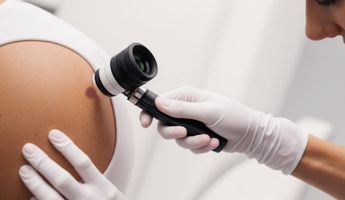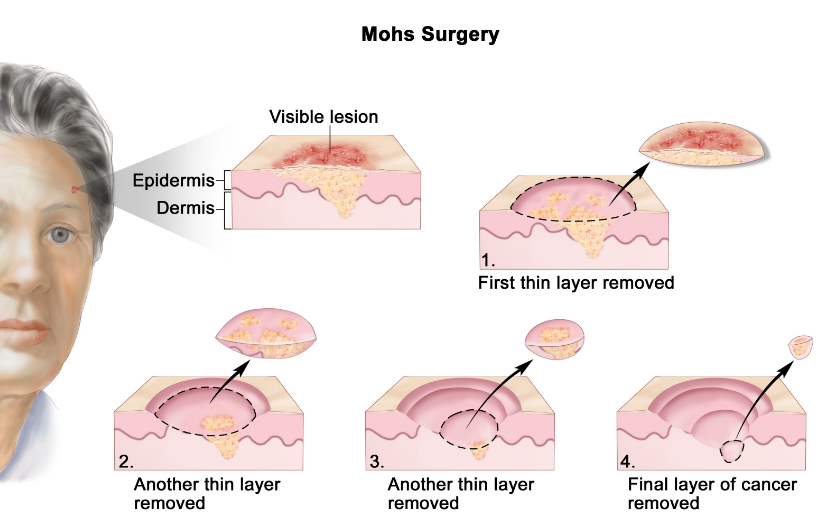Skin Cancer Surgery in Gurgaon
Search and Compare the Best Clinics and Doctors at the Lowest Prices for Skin Cancer Surgery in Gurgaon

Find the best clinics for Skin Cancer Surgery in Gurgaon
No pricing info available
Thailand offers the best prices Worldwide
Price: $ 53
From 168 verified reviews
Ram Charan Ramcharan Ambala, 23 September 2020
All Servis are goodAll stafe are goodHospital is very niceHouse keeping are very goodNursing is goodDr goodCafe goodThanks for Columbia Asiai
WHY US?
At Medijump, we're making medical easy. You can search, compare, discuss, and book your medical all in one place. We open the door to the best medical providers worldwide, saving you time and energy along the way, and it's all for FREE, no hidden fees, and no price markups guaranteed. So what are you waiting for?

Free

Best Price

Widest Selection

Risk-Free
What you need to know about Skin Cancer Surgery in Gurgaon

Skin cancer, like other forms of cancer, may require surgery to remove the cancerous growth. For cancers that have not spread, surgery may be the only type of treatment needed. Skin cancers that are more aggressive, such as melanoma, often need more extensive surgeries. If your doctor found that nearby lymph nodes are inflamed, and the cancer cells are suspected to have spread, your doctor usually will need to remove the lymph nodes.
What does the Procedure Involve?
Different surgical techniques can be used to treat skin cancer, depending on the type of skin cancer, where it is on the body, how large the cancer is, and how deep the cancer is. The following are the types of skin cancer surgery.
Mohs Surgery
Mohs surgery is performed to treat the most common skin cancers, squamous cell carcinoma, and basal cell carcinoma, as well as some kinds of melanoma and other unusual skin cancers. This surgery is designed to remove as much of the skin cancer as possible while ensuring the surrounding healthy tissue is preserved. During Mohs surgery, your surgeon removes the cancerous cells from the skin layer by layer, until only cancer-free tissue remains. It is usually used in highly visible areas, such as the face, head, or neck, in order to limit scarring. It can also be used to treat recurrent skin cancers. Mohs surgery is performed under local anesthetic, meaning only the affected area is numbed but you will remain awake during the surgery.
Excisional surgery
Excisional surgery is appropriate for any type of skin cancer. The surgeon performs an excision with a sharp razor or scalpel, shaving or cutting a growth off the skin. There are several types of excision that may be performed:
-
A simple excision uses a scalpel to remove the skin growth, as well as a small part of the surrounding tissue.
-
A wide excision involves shaving or peeling a growth off the surface of the skin using a sharp razor-like tool
-
Wide excision is usually used for Merkel cell carcinomas and melanoma. This type of excisional surgery removes the skin tumor as well as a wider surrounding healthy tissue. It may also extend more deeply into the skin.
Excisional surgery is done under local anesthetic.
Curettage and electrodessication
This procedure involves removing a skin lesion with a curette, which is a long, thin surgical tool with a tiny circular blade on its end for scraping. Once the lesion is scraped, the affected area is then treated through electrodesiccation, which uses an electric needle designed to reduce bleeding and kill any cancer cells that remain on the skin. The process may be carried out several times and is performed under local anesthesia.
Cryosurgery
Cryosurgery, also called cryotherapy, is a technique to freeze and destroy cancer cells using liquid nitrogen. The technique may be repeated several times and is only used for pre-cancerous lesions and small skin cancers.
Laser surgery
During laser surgery, an intense beam of light is used to destroy cancer cells. This type of surgery is only used to treat very superficial skin cancers.
Lymph node biopsy and removal
A lymph node biopsy is often performed on patients with melanoma. During this procedure, the doctor will remove one or more sentinel lymph nodes. If no sign of cancer is found in the lymph node, no additional lymph node surgery is required. However, if melanoma cells is found in one or more sentinel lymph nodes, it may be necessary to remove the remaining lymph nodes in the area.
Surgery for metastatic skin cancer
Basal cell and squamous cell carcinomas, which are the most common types of skin cancers, normally do not metastasize. However, melanoma may travel to the bones, brain, lungs, and liver. When this happens, surgery may be needed to remove tumors from those locations. This surgery may be combined with other treatments, such as chemotherapy and immunotherapy.
Reconstructive surgery
Skin cancer surgery may cause disfigurement or scarring, particularly when extensive surgery is required to remove cancer, or when the surgery is carried in highly visible areas, such as the hands, neck, face, or head.
How Long Should I Stay in Gurgaon?
Most skin cancer surgeries are performed as an outpatient procedure, meaning you can leave the hospital on the same day. For more extensive surgeries, you may need to stay for several days. It is recommended that you stay in Gurgaon for at least 7 to 14 days for follow up checkups and initial recovery.
What's the Recovery Time?
Recovery time of skin cancer surgery depends on the type of surgery you have. In general, it is wise to take it easy for several days. Your doctor will give you a detailed recovery timeline, which includes when you can go back to work and resume your normal activities.
What About Aftercare?
You will be given instructions following your surgery. It is important that you follow the instruction carefully. Try to avoid movements that may stress your wound and sutures, and make sure to keep the incision sites clean and well protected from potential injury. In most cases, you will have to attend a follow-up checkup to ensure cancer has not come back. However, you can choose to have this follow-up checkup with your local doctor.
What's the Success Rate?
Skin cancer surgery is generally safe and effective. Mohs surgery has one of the highest cure rates at up to 99%. Still, the surgery carries some potential side effects, including pain, swelling, bruising, bleeding, infection, scarring, disfigurement, fatigue, and lymphedema.
Are there Alternatives to Skin Cancer Surgery?
The alternative to surgery depends on the size, location, depth, and type of skin cancer. Small skin cancers limited to the surface of your skin may not need any treatment besides an initial skin biopsy. Other types of treatments include radiation therapy, chemotherapy, photodynamic therapy, and biological therapy. However, in some cases, these treatments are done in conjunction with surgery.
What Should You Expect Before and After the Procedure
Before skin cancer surgery, you may have a cancerous growth in your skin that causes uncomfortable and painful symptoms. In some cases, growth can be dangerous and life-threatening. After skin cancer surgery, cancer should be removed and you may be cured of cancer, allowing you to live your normal life again and improving your quality of life.
Whilst the information presented here has been accurately sourced and verified by a medical professional for its accuracy, it is still advised to consult with your doctor before pursuing a medical treatment at one of the listed medical providers
No Time?
Tell us what you're looking for and we'll reachout to the top clinics all at once
Enquire Now

Popular Procedures in Gurgaon
Prices Start From $106

Prices Start From $512

Prices Start From $39

Prices Start From $6,002

Recommended Medical Centers in Gurgaon for Skin Cancer Surgery

- Interpreter services
- Translation service
- Religious facilities
- Medical records transfer
- Medical travel insurance
- Health insurance coordination
- TV in the room
- Safe in the room
- Phone in the room
- Private rooms for patients available

- Interpreter services
- Translation service
- Religious facilities
- Medical records transfer
- Medical travel insurance
- Health insurance coordination
- TV in the room
- Safe in the room
- Phone in the room
- Private rooms for patients available

- Interpreter services
- Translation service
- Religious facilities
- Medical records transfer
- Medical travel insurance
- Health insurance coordination
- TV in the room
- Safe in the room
- Phone in the room
- Private rooms for patients available

- Interpreter services
- Translation service
- Religious facilities
- Medical records transfer
- Medical travel insurance
- Health insurance coordination
- TV in the room
- Safe in the room
- Phone in the room
- Private rooms for patients available

- Interpreter services
- Translation service
- Religious facilities
- Medical records transfer
- Medical travel insurance
- Health insurance coordination
- TV in the room
- Safe in the room
- Phone in the room
- Private rooms for patients available

- Interpreter services
- Translation service
- Religious facilities
- Medical records transfer
- Medical travel insurance
- Health insurance coordination
- TV in the room
- Safe in the room
- Phone in the room
- Private rooms for patients available
Skin Cancer Surgery in and around Gurgaon
About Gurgaon
Gurgaon, officially named Gurugram, is a city in the northern Indian state of Haryana. It’s one of the major satellite cities of Delhi and is part of the National Capital Region of India. The city is one of the fastest-growing cities in the country and is a leading financial center after Mumbai and Chennai. Its skyline is dominated by skyscrapers, with upscale shopping malls per square mile, all types of restaurants, and a brand new metro system. Gurgaon is also fast becoming a global medical tourism hotspot as it provides top medical care at affordable prices. Numerous medical centers in the city are accredited by the National Accreditation Board of Hospitals and Healthcare Providers (NABH) and the Joint Commission International (JCI). These medical centers are equipped with advanced technology and qualified specialists, allowing them to deal with complicated cases. Most medical tourists, particularly from the Middle East and Africa, come to the city to undergo cardiology, knee replacement, gastric bypass, and cosmetic surgeries.
Popular Parts of Gurgaon
There are museums and temples as main attractions. History enthusiasts, especially those who are interested in automobiles, should visit the Heritage Transport Museum. It has a huge collection of pre-modern and modern cars, as well as palanquins, bullock carts, howdahs, and boats. The most popular attraction in the city is the Kingdom of Dreams, which is India’s first live entertainment zone that offers theater and leisure activities. It allows visitors to indulge in India’s cultural heritage through drama and music. Other popular places in the city are Sultanpur Bird Sanctuary, Damdama Lake, and Cyber Hub.
Transport in Gurgaon
Delhi’s Indira Gandhi International Airport is conveniently located just across the border of Gurgaon, which makes it easier for international tourists to visit the city. The city is improving its public transport system and there are intercity minibusses, Rapid Metro Gurgaon, and cycle rickshaws. Taxis are widely available and are reasonably priced.
Visas in Gurgaon
Holders of passports issued by Maldives, Bhutan, and Nepal, are allowed to visit and stay in India without a visa. Nationals of other countries are required to obtain a visa. Citizens of South Korea, Japan, and the UAE can apply for a visa on arrival. Citizens of 150 countries are eligible to apply for an e-Visa.
Weather in Gurgaon
Gurgaon experiences several seasons with a high variation of temperature between summer and winter. Summer (April to June) can be very hot, with the average temperature rising to 32°C, sometimes even as high as 46°C. From June to mid-September is monsoon and the temperatures will fall to an average of 29°C, but it’s humid and rainy. In winter, starting from November to March, the temperature drops to an average of 6°C.
Additional Info
- Local Currency: The Indian rupee (INR) is the local currency, and 1 USD will get you about 73 INR.
- Money & Payments: ATMs are readily available around the city. Although credit cards are accepted in many establishments, always bring some cash with you as some places only accept cash. Tipping is not mandatory.
- Local Language: The official language is Hindi, but several regional languages are also spoken, English is understood and spoken to a lesser extent.
- Local Culture and Religion: Over 93% of the population follows Hinduism. Islam and Sikhism Christian and Buddhists are all practiced as well.
- Public Holidays: New Year’s Day, Republic Day, Tamil New Year, and Deepavali are some of the most important and most celebrated holidays.
Popular Searches
- Plastic Surgery in Thailand
- Dental Implants in Thailand
- Hair Transplant in Thailand
- Breast Augmentation Thailand
- Gastric Sleeve in Thailand
- Gender Reassignment Surgery in Thailand
- Laser Hair Removal in Bangkok
- Botox in Bangkok
- Dermatology in Bangkok
- Breast Augmentation in Bangkok
- Coolsculpting in Bangkok
- Veneers in Turkey
- Hair Transplant in Turkey
- Rhinoplasty in Turkey
- Stem Cell Therapy in Mexico
- Rhinoplasty in Mexico
- Liposuction in Mexico
- Coolsculpting in Tijuana
- Rhinoplasty in Korea
- Scar Removal in Korea
- Gastric Sleeve in Turkey
- Bone Marrow Transplant in India
- Invisalign in Malaysia
- Plastic Surgery in the Dominican Republic
- Tummy Tuck in the Dominican Republic
- Plastic and Cosmetic Surgery in Poland
- Rhinoplasty in Poland
- Hair Implant in Poland
- Dental Implants in Poland
- IVF in Turkey
